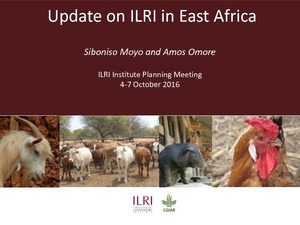Trends in on-farm performance testing of cattle and sheep in sub-Saharan Africa
Summarises past and present experiences with livestock performance testing in sub-Saharan Africa and outlines the role of networks in improving on-farm testing through the use of standardised testing methods and rapid data handling and feedback. Includes data on the distribution of cattle and sheep populations by ecological zone in sub-Saharan Africa. Presents current programmes for on-farm and on-station performance recording.








